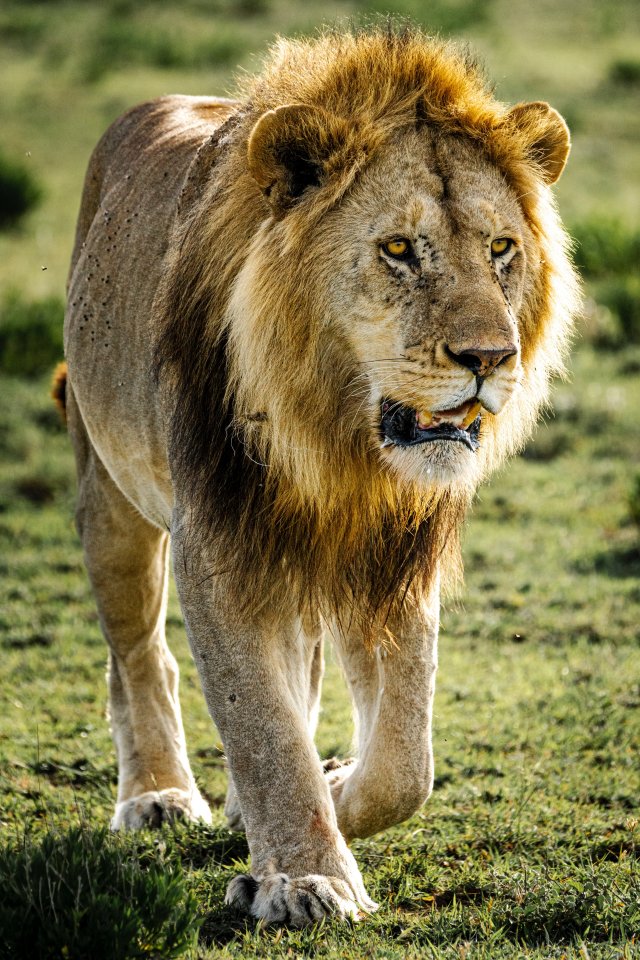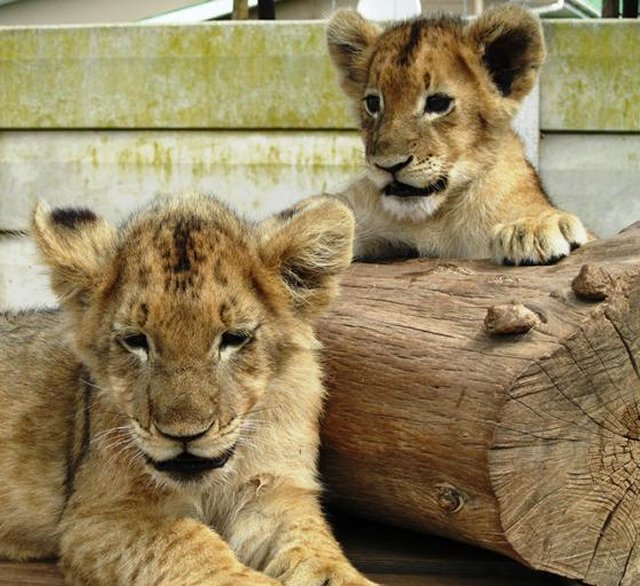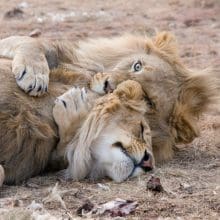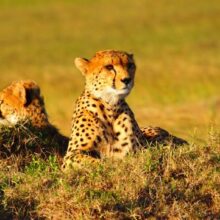The Top 10 Fascinating Facts About Lions
Facts About Lions
Lions are majestic creatures that have captivated humans for centuries. Known as the “king of the jungle,” these big cats are not only powerful and beautiful but also possess a range of fascinating characteristics. In this article, we will explore the top 10 intriguing facts about lions, shedding light on their behavior, social structure, and unique adaptations.
1. Lions are Social Animals
Lions are the only truly social cats, living in groups called prides. These prides typically consist of related females, their offspring, and a few adult males. The social structure of a pride is hierarchical, with a dominant male known as the “pride leader” or “king” and several subordinate males.
Example: In the Maasai Mara National Reserve in Kenya, researchers observed a pride of lions led by a dominant male named Scarface. Scarface successfully defended his territory against rival males, ensuring the safety and survival of his pride.
2. Lionesses are the Primary Hunters
While the male lions are often associated with hunting, it is the lionesses who do the majority of the hunting for the pride. They work together in coordinated efforts to bring down large prey such as zebras, wildebeests, and buffalo.
Example: In Tanzania’s Serengeti National Park, a group of lionesses was observed hunting a wildebeest. They strategically surrounded the herd, isolating a weak individual and launching a synchronized attack, showcasing their exceptional teamwork.
3. Lions Have Unique Roaring Abilities
Lions are known for their powerful roars, which can be heard up to 8 kilometers away. Roaring serves various purposes, including communication, marking territory, and asserting dominance. The roar of a lion is so distinctive that it can be used to identify individuals.
Example: In South Africa’s Kruger National Park, researchers used acoustic analysis to identify individual lions based on their roars. This technique proved to be an effective tool for monitoring lion populations and studying their behavior.
4. Lions and Water
While lions are not typically associated with swimming, they are not averse to water. In fact, lions are known to be quite capable swimmers when the need arises. They are often found near bodies of water, such as rivers and lakes, especially in hot climates. Lions use water as a means to cool down and quench their thirst.
One example of lions’ swimming abilities can be seen in the Okavango Delta in Botswana. This unique ecosystem is home to a large population of lions who have adapted to their watery surroundings. These lions are known to swim across channels and even hunt in water, showcasing their agility and comfort in aquatic environments.
5. Lions Have Unique Coat Patterns
Each lion has a unique coat pattern, similar to human fingerprints. These patterns, known as whisker spots or “vibrissae,” are used by researchers and conservationists to identify individuals and track their movements.
Example: In the Hwange National Park in Zimbabwe, a lioness named Cecil was identified and monitored using her distinct whisker spot pattern. This enabled researchers to gather valuable data on her behavior and contribute to lion conservation efforts.
6. Lions Are Opportunistic Feeders
Lions are opportunistic feeders, meaning they will eat almost anything they can catch. While their primary diet consists of large ungulates, such as antelopes and zebras, they are known to scavenge on carrion and even prey on smaller animals when necessary.
Example: In Tanzania’s Ngorongoro Crater, lions have been observed scavenging on the remains of a wildebeest killed by a group of hyenas. This behavior highlights their adaptability and ability to take advantage of available food sources.
7. Lions Sleep for Up to 20 Hours a Day
Lions are known for their love of sleep, spending up to 20 hours a day resting or sleeping. This behavior is essential for conserving energy, as they are primarily nocturnal hunters and need to be alert during their active periods.
Example: In South Africa’s Kruger National Park, a group of lions was observed resting under the shade of a tree during the hottest part of the day. This behavior allows them to avoid excessive heat and conserve energy for their hunting activities.
8. Lions Have Declined in Population
Despite their iconic status, lions have experienced a significant decline in population over the past century. Habitat loss, poaching, and conflicts with humans have contributed to their decline. According to the International Union for Conservation of Nature (IUCN), lions are currently listed as a vulnerable species.
Example: In the Gir Forest National Park in India, the last remaining population of Asiatic lions faced a severe decline due to habitat fragmentation and poaching. Conservation efforts, including habitat restoration and anti-poaching measures, have been implemented to protect this endangered subspecies.
9. Lions Play an Important Role in Ecosystems
Lions play a crucial role in maintaining the balance of ecosystems. As top predators, they regulate prey populations, preventing overgrazing and maintaining the health of herbivore populations. Their presence also influences the behavior and distribution of other species.
Example: In South Africa’s Kruger National Park, the reintroduction of lions into certain areas led to a decrease in the population of herbivores such as impalas. This, in turn, allowed vegetation to recover and created a more diverse habitat for other species.
10. Lions Symbolize Strength and Courage
Lions have long been associated with strength, courage, and nobility. They are often depicted in art, literature, and mythology as symbols of power and leadership. Their majestic appearance and fierce nature have made them a source of inspiration for humans throughout history.
Example: In ancient Egyptian culture, lions were revered and associated with deities such as Sekhmet, the goddess of war and healing. Statues and carvings of lions were placed in temples and tombs to symbolize protection and strength.
Summary
Facts About Lions: Lions are truly fascinating creatures, with their social behavior, unique adaptations, and symbolic significance. From their hierarchical prides to their exceptional hunting skills, lions continue to captivate our imagination. However, it is crucial to recognize the challenges they face and the importance of conservation efforts to ensure their survival in the wild. By understanding and appreciating these magnificent animals, we can contribute to their preservation and continue to be inspired by their remarkable qualities.
Read More About Preserving Big Cats From Wikipedia





